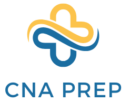Ace your CNA Chapter 10 Exam with smart preparation strategies.
- Essential Topics: Focus on the core subjects crucial for your CNA certification.
- Study Techniques: Learn the most effective study practices tailored to your learning style.
- Exam Confidence: Boost your test-taking confidence with targeted preparation.
Navigate the CNA Chapter 10 Exam journey with ease.
- Understanding the CNA Chapter 10 Exam
- Key Topics Covered in Chapter 10
- Study Strategies for Effective Learning
- Practical Skills and Knowledge Application
- Sample Quiz Questions and Answers
- Tips for Exam Day Preparation
- Resources for Further Study
- Handling Exam Anxiety and Stress
- After the Exam: Next Steps
- Conclusion: The Path to CNA Success
- Understanding the CNA Chapter 10 Exam
- Key Topics Covered in Chapter 10
- Study Strategies for Effective Learning
- Practical Skills and Knowledge Application
- Sample Quiz Questions and Answers
- Tips for Exam Day Preparation
- Resources for Further Study
- Handling Exam Anxiety and Stress
- After the Exam: Next Steps
- Conclusion: The Path to CNA Success
Understanding the CNA Chapter 10 Exam
When you approach the CNA Chapter 10 exam, it’s like standing at the gateway to a rewarding career in the healthcare sector. As part of the journey to becoming a Certified Nursing Assistant (CNA), this crucial checkpoint evaluates your grasp of essential knowledge and skills. Every question, every task you face is designed not just to test you, but to prepare you for the real-world situations that CNAs encounter daily.
What’s on the Exam?
The CNA Chapter 10 exam typically encompasses topics such as patient care, safety protocols, and emergency procedures. Not only does it assess your theoretical understanding, it also puts your practical competencies to the test. To ensure a successful outcome, concentrate on these vital areas:
- Patient Rights and Ethics: Understand the importance of patient privacy, informed consent, and ethical decision-making.
- Communication Skills: Learn effective ways to interact with patients, family members, and healthcare team members.
- Infection Control: Gain knowledge on preventing and controlling the spread of infections within healthcare settings.
Breaking Down the Content
The material in Chapter 10 is likely dense and multifaceted. Digesting it means taking apart complex concepts and studying them piece by piece. This is crucial because the exam isn’t just about memorization—it’s about application in real clinical settings.
Key Topics Covered in Chapter 10
Within Chapter 10, you’re diving into a pool of knowledge that forms the backbone of patient care. Prioritize these topics, and you’ll be well-equipped to tackle the exam with confidence.
- Patient Care Techniques: From basic hygiene to assisting with mobility, master the procedures that directly impact patient well-being.
- Observation and Reporting: Learn to monitor vital signs and recognize changes in a patient’s condition, then report accurately to other healthcare professionals.
- Safety and Emergency Care: Get familiar with safety practices and emergency responses, ensuring a safe environment for both patients and staff.
Study Strategies for Effective Learning
The best study strategies are those that transform information into long-term knowledge. Here’s a valuable lineup that will help you convert study sessions into successful exam outcomes.
- Active Recall: Test yourself regularly to enhance memory retention.
- Spaced Repetition: Space out your study sessions to prevent burnout and improve memorization.
- Mind Mapping: Create visual aids to connect different topics and visualize the material in a clear format.
Customizing Your Study Plan
It’s essential to tailor your study plan to suit your learning style. Whether you’re a visual learner, an auditory learner, or a kinesthetic learner, find resources that cater to your strengths.
Practical Skills and Knowledge Application
Theory turns to practice with the application of Chapter 10 content. Mastering practical skills means you’re not just prepared for the exam, but also primed for your day-to-day duties as a CNA.
- Clinical Scenarios: Rehearse realistic situations to sharpen your critical thinking and problem-solving skills.
- Skill Labs: Engage in hands-on practice sessions that mimic the exam’s practical component and workplace environments.
The Art of Caregiving
Beyond technical skills, remember that caregiving is an art. It’s about empathy, patience, and respect—traits that can’t be measured by a test, but are crucial to delivering quality care.
Sample Quiz Questions and Answers
The CNA Chapter 10 exam leans heavily on both multiple-choice and skill-based questions. Here’s a glimpse of what you might encounter, with reasoning to guide you through each answer.
- Proper Handwashing Procedure:
- Understanding Patient Privacy:
- Recognizing and Reporting Patient Symptoms:
Engaging with these sample questions, you’ll not only refine your test-taking strategy but also reinforce the practical knowledge that underpins a CNA’s responsibilities.
Tips for Exam Day Preparation
As your CNA Chapter 10 exam day approaches, you want to ensure that you are as prepared as possible – mentally, physically, and emotionally. The day before the exam is a critical period in which you should transition from a focus on study to a focus on success.
The Day Before
- Review Key Notes: Briefly go over your condensed notes or flashcards, refreshing your memory on crucial facts without overwhelming yourself.
- Pack Your Essentials: Organize all necessary items, such as identification, pencils, a watch, and any allowed reference material, the night before to avoid morning panic.
The Morning Of
- Balanced Breakfast: Start your day with a nutritious meal to fuel your brain for the hours ahead.
- Leave Early: Account for possible delays to arrive at the exam center with ample time to spare, reducing stress.
Moments Before the Exam
- Deep Breathing: Use deep breathing techniques to calm any lingering nerves.
- Positive Affirmations: Remind yourself of your preparation and ability. You’re ready for this!
Staying centered on exam day is critical. Strategizing for the exam isn’t just about what you know; it’s about ensuring you’re in the right state of mind to demonstrate your knowledge.
Resources for Further Study
Your preparation for the CNA Chapter 10 exam can always be strengthened with additional resources. Here are some invaluable tools to supplement your study plan:
- Official CNA Study Guides: These are tailored specifically to the structure and content required by the CNA exams.
- Online Practice Tests: These simulate the actual exam environment and provide insight into the types of questions you can expect.
Enhancing your preparation with these resources can give you that extra edge to ace your CNA exam.
Handling Exam Anxiety and Stress
Exam anxiety is a common hurdle, but it doesn’t have to be a roadblock. Use these tactics to maintain a tranquil mind and sharp focus:
- Visualization: Picture yourself successfully completing the exam to foster a positive mindset.
- Stay Active: Light exercise can be a great way to deter stress and keep your energy levels balanced.
- Relaxation Techniques: Explore methods like mindfulness or yoga to ease your mind before the test.
A calm candidate is a confident and capable one. Approach your exam with serenity, and you’ll be poised to perform your best.
After the Exam: Next Steps
Post-exam, the journey doesn’t end. Here’s how to march forward, regardless of the outcome:
- Wait Patiently: Results will come in due time. Use the post-exam period to relax and recharge.
- Analyze Feedback: Whether you passed or need another attempt, understanding your results can propel your future learning and success.
The exam is an opportunity for growth. Embrace the experience, and allow it to refine your skills and knowledge as you continue your CNA career path.
Conclusion: The Path to CNA Success
You’ve embarked on a noble quest toward becoming a CNA, and acing your CNA Chapter 10 exam is a beacon lighting your way forward. Each chapter, each exam fosters growth. Embrace the challenge, utilize these strategies, and remember that each step brings you closer to your goal of providing compassionate, competent care in the medical field.
Strike a balance between rigorous study and personal well-being. With strategic preparation, practical application, and resourceful planning, you’re setting yourself up for not just a successful examination but also a thriving career in healthcare.
Remember, your path doesn’t end at the CNA Chapter 10 exam. It’s a continuous journey of learning, caring, and developing. Stay curious, stay committed, and you’ll find that your efforts pay off in both your professional achievements and in the positive impact you have on the lives of those you care for.
Embrace the challenge, and may your dedication illuminate your path in the rewarding field of nursing!

